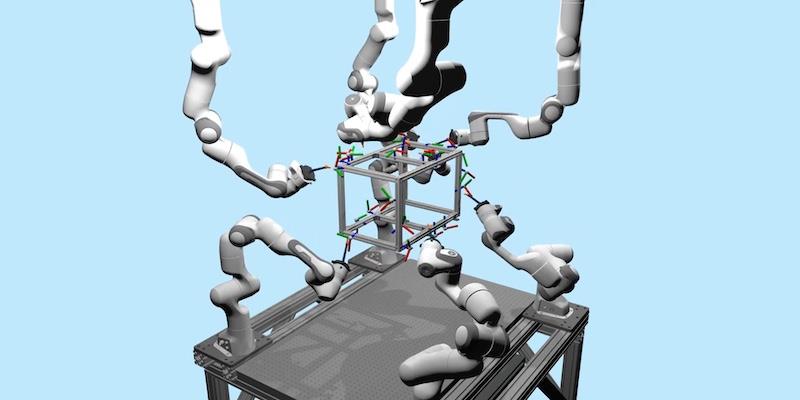Intrinsic And Google Deepmind Develop AI System For Multi-Robot Orchestration
September 4, 2025 by Mai Tao
Intrinsic , a robotics software company owned by Alphabet, parent company of Google, has announced a major advance in artificial intelligence that enables multiple industrial robots to work together in shared environments without colliding.
The development stems from long-term research led by Google DeepMind Robotics – now apparently rebranded as Gemini Robotics – in collaboration with Intrinsic and University College London.
Details of the project were published in Science Robotics under the title“RoboBallet: Planning for Multi-Robot Reaching with Graph Neural Networks and Reinforcement Learning”.
According to the companies, the new method addresses one of the toughest problems in industrial automation: coordinating several robots to perform tasks simultaneously in confined spaces.
Traditional programming methods, which require manually coding each robot's movements, are time-consuming, inflexible and difficult to scale.
The research introduces a specialized AI model built on Graph Neural Networks (GNNs) and trained with reinforcement learning.
The system was exposed to millions of synthetically generated scenarios, enabling it to plan efficient and collision-free motion paths in previously unseen environments.
Matthew Lai, research engineer at Google DeepMind Robotics, says:“We developed an AI-based approach to solving this problem that uses a graph neural network trained using reinforcement learning, allowing, for the first time, automated task and motion planning at industrial scale with up to eight robots working together.
“Our solution is able to generate high quality robot motion plans in seconds.”
Intrinsic said the approach can outperform traditional methods and expert-designed solutions by about 25 percent in lab tests. In addition, efficiency improved as more robots were added: scaling from four to eight machines reduced average execution times by 60 percent.
The AI can be given a“bundle of tasks” and autonomously generate motion sequences without human intervention, while automatically avoiding collisions. The model also adapts to new scenarios without requiring additional training or annotations.
The companies believe the technology could have far-reaching implications for industries such as automotive, aerospace and electronics, where multiple robots often operate in close proximity.
Future developments may allow the system to replan tasks in real time, adapting to changes such as shifting parts, unexpected obstacles or even equipment failures.
Intrinsic described the research as“a critical step towards bringing truly adaptive, hyper-efficient multi-robot models to robotics and manufacturing at large”.
Legal Disclaimer:
MENAFN provides the
information “as is” without warranty of any kind. We do not accept
any responsibility or liability for the accuracy, content, images,
videos, licenses, completeness, legality, or reliability of the information
contained in this article. If you have any complaints or copyright
issues related to this article, kindly contact the provider above.
Most popular stories
Market Research

- Daytrading Publishes New Study On The Dangers Of AI Tools Used By Traders
- Primexbt Launches Empowering Traders To Succeed Campaign, Leading A New Era Of Trading
- Wallpaper Market Size, Industry Overview, Latest Insights And Forecast 2025-2033
- Excellion Finance Scales Market-Neutral Defi Strategies With Fordefi's MPC Wallet
- ROVR Releases Open Dataset To Power The Future Of Spatial AI, Robotics, And Autonomous Systems
- Ethereum-Based Meme Project Pepeto ($PEPETO) Surges Past $6.5M In Presale






















Comments
No comment